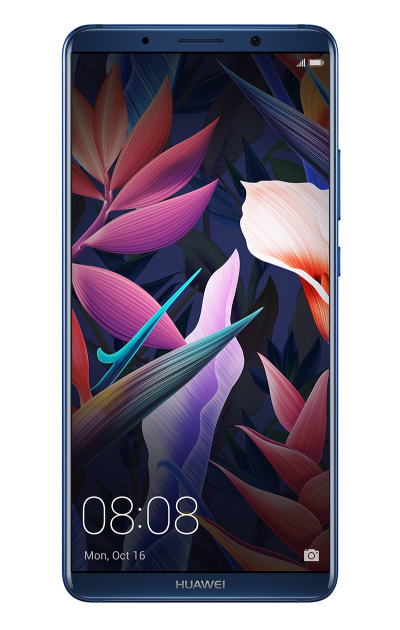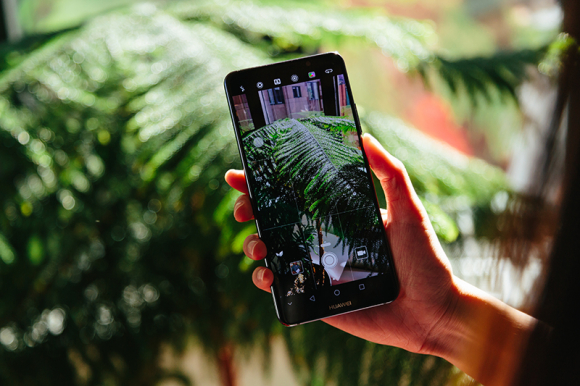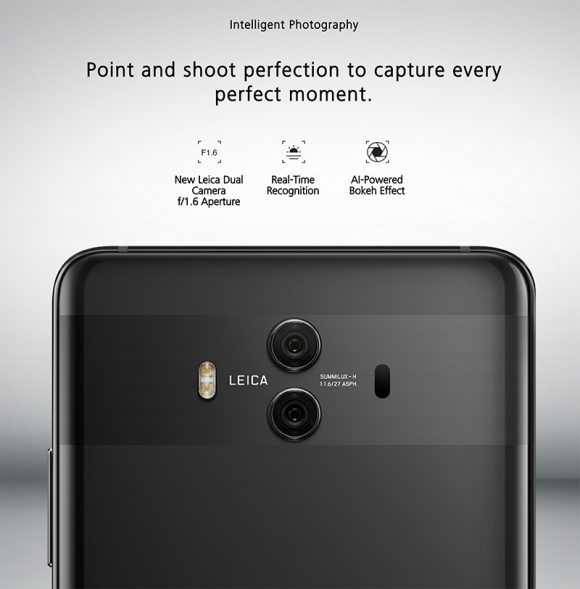Huawei’s new AI-powered Mate 10 packs dual Leica Summilux f/1.6 lenses
posted Monday, October 16, 2017 at 11:00 AM EDT

Huawei this morning announced the next generation of their popular smartphones, the Mate 10 and Mate 10 Pro. The only difference between the two models is the size and screen: The Mate 10 features a 5.9-inch 2560 x 1440 LCD while the Mate 10 Pro’s display is a 6-inch 2160 x 1080 OLED. The two phones are the first devices powered by Huawei's new Kirin 970 processor and allow it to "deliver AI enhancements" to the user experience. The Kirin 970 is built using an advanced TSMC 10nm semiconductor manufacturing process, and features an octa-core ARM Cortex CPU, a first-to-market Mali-G72 12-core GPU and the first NPU designed specifically for a mobile device. The Kirin 970 also has a new dual ISP for AI-powered intelligent photography.


Before we get to the photography part, one of the largest claims Huawei makes regarding the AI tech is that it should help prevent the device's performance degredation over time, which is a problem with Android devices. The Mate 10 uses on-device processing to build a model of how you use the phone and allocates resources accordingly with machine learning predicting user behavior. Hey, if it keeps a phone operating at peak effeciency, or close to it, for the entire time I own the phone, I'm in.
The Mate 10 is supposed to have an extremely impressive battery life. It sports a 4000 mAh high-density battery featuring a smart battery management system that understands user behavior and intelligently allocates resources to maximize battery life. It supports 4.5V / 5A low-voltage fast charging, powering the device from 1 percent to 20 percent in 10 minutes, and from 1 percent to 58 percent in 30 minutes.
So what was that about AI-powered intelligent photography? Huawei says the Mate 10 is capable of achieving real-time scene and object recognition while capturing images, and is able to automatically chose camera settings based on that object or scene detected. It also has an advanced AI-powered digital zoom function with an AI motion detector for clearer and shaper pictures. There is a lot of interesting-sounding technology there, but we will need to see for ourselves how, or if, that translates into better images.

Hardware-wise, Huawei partnered with Leica to co-engineer a dual-lens camera for both smartphones. They combine a 12-megapixel RGB and 20-megapixel monochrome sensors with optical image stabilization and a wide open aperature for both lenses at f/1.6. Oddly, that's about all the information we were given on the camera. They quickly gloss over some rather cool-sounding features, so we can't wait to get our hands on this ourselves and test it out.
For more information, visit huawei.com.